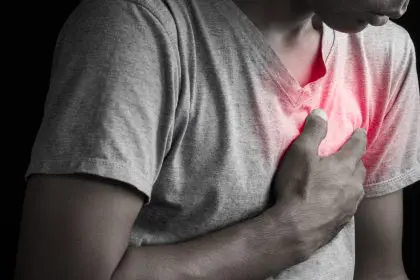Many people use the terms heart attack and cardiac arrest interchangeably, but these two heart emergencies differ significantly in both cause and treatment. Understanding these differences could mean the difference between life and death in an emergency situation, according to leading cardiologists who treat these conditions daily.
Heart attacks explained
A heart attack occurs when blood flow to the heart becomes blocked, typically due to a buildup of cholesterol and plaque in the arteries. Think of it as a plumbing problem – when a pipe gets clogged, water can’t flow through. Similarly, when an artery becomes blocked, blood can’t reach part of the heart muscle, causing damage.
The sudden nature of cardiac arrest
Cardiac arrest presents a completely different scenario. Rather than a blockage problem, cardiac arrest happens when the heart’s electrical system malfunctions, causing the heart to stop beating altogether. This situation proves far more immediately dangerous, as the body loses blood flow to all vital organs within seconds.
Warning signs that shouldn’t be ignored
Heart attacks often provide warning signs hours or even days before the actual event. People might experience chest pain radiating to their arms or jaw, shortness of breath, unusual fatigue, or unexplained anxiety. Women frequently report different symptoms than men, including nausea, back pain, and extreme fatigue.
The shocking speed of cardiac arrest
Unlike heart attacks, cardiac arrest strikes without warning. Victims suddenly collapse, lose consciousness, and stop breathing. Without immediate intervention, brain damage begins within minutes, making rapid response crucial for survival. This stark difference in onset makes understanding the two conditions even more important.
The connection between both conditions
While distinct, these conditions sometimes interlink. A severe heart attack can trigger cardiac arrest, though not all heart attacks lead to this outcome. Conversely, cardiac arrest can occur without any prior heart attack, caused by various factors including genetic conditions or severe physical stress.
Time matters more than ever
The response time for each condition varies significantly. Heart attack victims typically have hours to receive medical treatment, though earlier intervention leads to better outcomes. With cardiac arrest, every minute without treatment reduces survival chances by ten percent. After ten minutes without intervention, survival becomes extremely rare.
Modern treatment approaches
Medical advances have improved survival rates for both conditions. Heart attack treatments focus on restoring blood flow through medications or surgical procedures. Cardiac arrest requires immediate CPR and often an automated external defibrillator (AED) to restart the heart’s normal rhythm.
Prevention remains crucial
While not all heart emergencies can be prevented, lifestyle choices significantly impact risk factors. Regular exercise, healthy eating habits, stress management, and routine medical check-ups help reduce the likelihood of both conditions. Knowing family history also plays a vital role in prevention strategies.
Understanding genetic factors
Family history significantly influences heart health. People with close relatives who experienced heart attacks or cardiac arrest at young ages face higher risks themselves. This knowledge helps healthcare providers develop personalized prevention strategies.
The role of modern technology
Advances in medical technology have created new ways to monitor heart health and predict potential problems. Wearable devices can track heart rhythms, while sophisticated imaging techniques help doctors identify arterial blockages before they cause heart attacks.
Impact on survivors
Survivors of both conditions often face different recovery journeys. Heart attack survivors typically undergo cardiac rehabilitation programs focusing on exercise, diet modification, and stress management. Cardiac arrest survivors might need additional support dealing with psychological trauma and potential neurological effects.
The importance of education
Understanding these differences extends beyond medical professionals. Public awareness can lead to faster recognition of symptoms and appropriate emergency responses. This knowledge becomes particularly crucial in workplaces and community settings where emergencies might occur.
Moving forward with awareness
As medical understanding continues to evolve, new treatments and prevention strategies emerge. However, the fundamental importance of recognizing the differences between heart attacks and cardiac arrest remains constant. This knowledge, combined with proper emergency response training, continues to save lives.
Community response matters
Communities with higher rates of CPR training and readily available AEDs show significantly better survival rates for cardiac arrest. This highlights the importance of public health education and emergency response preparation in saving lives during cardiac emergencies.
Remember, while both conditions require immediate medical attention, understanding their differences helps ensure appropriate response in emergency situations. Whether experiencing symptoms yourself or witnessing someone in distress, knowing these distinctions could mean the difference between life and death.
Permalink: crucial-difference-heart-attacks-cardiac-arrest-everyone-should-know













